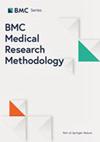The impact of different censoring methods for analyzing survival using real-world data with linked mortality information: a simulation study
IF 3.9
3区 医学
Q1 HEALTH CARE SCIENCES & SERVICES
引用次数: 0
Abstract
Evaluating outcome reliability is critical in real-world evidence studies. Overall survival is a common outcome in these studies; however, its capture in real-world data (RWD) sources is often incomplete and supplemented with linked mortality information from external sources. Conflicting recommendations exist for censoring overall survival in real-world evidence studies. This simulation study aimed to understand the impact of different censoring methods on estimating median survival and log hazard ratios when external mortality information is partially captured. We used Monte Carlo simulation to emulate a non-randomized comparative effectiveness study of two treatments with RWD from electronic health records and linked external mortality data. We simulated the time to death, the time to last database activity, and the time to data cutoff. Death events after the last database activity were attributed to linked external mortality data and randomly set to missing to reflect the sensitivity of contemporary real-world data sources. Two censoring schemes were evaluated: (1) censoring at the last activity date and (2) censoring at the end of data availability (data cutoff) without an observed death. We assessed the performance of each method in estimating median survival and log hazard ratios using bias, coverage, variance, and rejection rate under varying amounts of incomplete mortality information and varying treatment effects, length of follow-up, and sample size. When mortality information was fully captured, median survival estimates were unbiased when censoring at data cutoff and underestimated when censoring at the last activity. When linked mortality information was missing, censoring at the last activity date underestimated the median survival, while censoring at the data cutoff overestimated it. As missing linked mortality information increased, bias decreased when censoring at the last activity date and increased when censoring at data cutoff. Researchers should consider the completeness of linked external mortality information when choosing how to censor the analysis of overall survival using RWD. Substantial bias in median survival estimates can occur if an inappropriate censoring scheme is selected. We advocate for RWD providers to perform validation studies of their mortality data and publish their findings to inform methodological decisions better.使用具有关联死亡率信息的真实世界数据分析生存率时不同普查方法的影响:一项模拟研究
在真实世界证据研究中,评估结果可靠性至关重要。总存活率是这些研究中常见的结果;然而,真实世界数据(RWD)来源中对总存活率的捕捉往往不完整,而且还需要外部来源的相关死亡率信息作为补充。关于在真实世界证据研究中删减总生存率的建议存在冲突。本模拟研究旨在了解在部分获取外部死亡率信息的情况下,不同的剔除方法对估计中位生存率和对数危险比的影响。我们使用蒙特卡洛模拟法模拟了一项非随机比较效果研究,该研究使用电子健康记录和链接的外部死亡率数据对两种治疗方法进行了RWD。我们模拟了死亡时间、最后一次数据库活动时间和数据截止时间。最后一次数据库活动后的死亡事件归因于链接的外部死亡率数据,并随机设置为缺失,以反映当代真实世界数据源的敏感性。我们评估了两种剔除方案:(1) 在最后一次活动日期剔除;(2) 在数据可用性结束(数据截止)时剔除未观察到的死亡事件。我们评估了每种方法在使用偏差、覆盖率、方差和剔除率估算中位生存率和对数危险比时的性能,这些方法适用于不同数量的不完整死亡信息以及不同的治疗效果、随访时间和样本量。在完全掌握死亡率信息的情况下,如果在数据截止时进行普查,生存率中位数估计值是无偏的,而如果在最后一次活动时进行普查,生存率中位数估计值则会被低估。当缺失关联的死亡率信息时,在最后一次活动日期进行剔除会低估生存中位数,而在数据截止日期进行剔除则会高估生存中位数。随着缺失的关联死亡率信息的增加,在最后一次活动日期进行剔除时,偏差会减少,而在数据截止日期进行剔除时,偏差会增加。研究人员在选择如何使用 RWD 对总生存率进行剔除分析时,应考虑相关外部死亡率信息的完整性。如果选择了不恰当的剔除方案,中位生存期估计值可能会出现严重偏差。我们提倡 RWD 提供商对其死亡率数据进行验证研究,并公布研究结果,以便更好地为方法决策提供信息。
本文章由计算机程序翻译,如有差异,请以英文原文为准。
求助全文
约1分钟内获得全文
求助全文
来源期刊

BMC Medical Research Methodology
医学-卫生保健
CiteScore
6.50
自引率
2.50%
发文量
298
审稿时长
3-8 weeks
期刊介绍:
BMC Medical Research Methodology is an open access journal publishing original peer-reviewed research articles in methodological approaches to healthcare research. Articles on the methodology of epidemiological research, clinical trials and meta-analysis/systematic review are particularly encouraged, as are empirical studies of the associations between choice of methodology and study outcomes. BMC Medical Research Methodology does not aim to publish articles describing scientific methods or techniques: these should be directed to the BMC journal covering the relevant biomedical subject area.
 求助内容:
求助内容: 应助结果提醒方式:
应助结果提醒方式:


